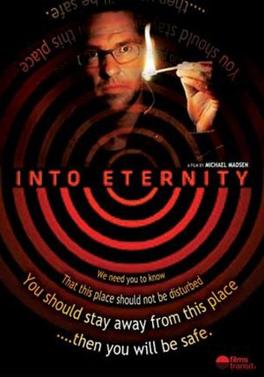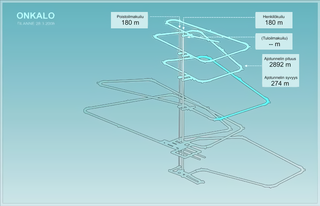
Radioactive waste is a type of hazardous waste that contains radioactive material. Radioactive waste is a result of many activities, including nuclear medicine, nuclear research, nuclear power generation, nuclear decommissioning, rare-earth mining, and nuclear weapons reprocessing. The storage and disposal of radioactive waste is regulated by government agencies in order to protect human health and the environment.

Johannes Wilhelm "Hans" Geiger was a German physicist. He is best known as the co-inventor of the detector component of the Geiger counter and for the Geiger–Marsden experiment which discovered the atomic nucleus. He also carried the Bothe–Geiger coincidence experiment that confirmed the conservation of energy in light-particle interactions.

The Bulletin of the Atomic Scientists is a nonprofit organization concerning science and global security issues resulting from accelerating technological advances that have negative consequences for humanity. The Bulletin publishes content at both a free-access website and a bi-monthly, nontechnical academic journal. The organization has been publishing continuously since 1945, when it was founded by Albert Einstein and former Manhattan Project scientists as the Bulletin of the Atomic Scientists of Chicago immediately following the atomic bombings of Hiroshima and Nagasaki. The organization is also the keeper of the symbolic Doomsday Clock, the time of which is announced each January.

The Yucca Mountain Nuclear Waste Repository, as designated by the Nuclear Waste Policy Act amendments of 1987, is a proposed deep geological repository storage facility within Yucca Mountain for spent nuclear fuel and other high-level radioactive waste in the United States. The site is on federal land adjacent to the Nevada Test Site in Nye County, Nevada, about 80 mi (130 km) northwest of the Las Vegas Valley.

Sandia National Laboratories (SNL), also known as Sandia, is one of three research and development laboratories of the United States Department of Energy's National Nuclear Security Administration (NNSA). Headquartered in Kirtland Air Force Base in Albuquerque, New Mexico, it has a second principal facility next to Lawrence Livermore National Laboratory in Livermore, California, and a test facility in Waimea, Kauai, Hawaii. Sandia is owned by the U.S. federal government but privately managed and operated by National Technology and Engineering Solutions of Sandia, a wholly owned subsidiary of Honeywell International.

Dry cask storage is a method of storing high-level radioactive waste, such as spent nuclear fuel that has already been cooled in the spent fuel pool for at least one year and often as much as ten years. Casks are typically steel cylinders that are either welded or bolted closed. The fuel rods inside are surrounded by inert gas. Ideally, the steel cylinder provides leak-tight containment of the spent fuel. Each cylinder is surrounded by additional steel, concrete, or other material to provide radiation shielding to workers and members of the public.

The Waste Isolation Pilot Plant, or WIPP, is the world's third deep geological repository licensed to store transuranic radioactive waste for 10,000 years. The storage rooms at the WIPP are 2,150 feet underground in a salt formation of the Delaware Basin. The waste is from the research and production of United States nuclear weapons only. The plant started operation in 1999, and the project is estimated to cost $19 billion in total.

Thomas Albert Sebeok was a Hungarian-born American polymath, semiotician, and linguist. As one of the founders of the biosemiotics field, he studied non-human and cross-species signaling and communication. He is also known for his work in the development of long-time nuclear waste warning messages, in which he worked with the Human Interference Task Force to create methods for keeping the inhabitants of Earth away from buried nuclear waste that will still be hazardous 10,000 or more years in the future.

Nazi Germany undertook several research programs relating to nuclear technology, including nuclear weapons and nuclear reactors, before and during World War II. These were variously called Uranverein or Uranprojekt. The first effort started in April 1939, just months after the discovery of nuclear fission in Berlin in December 1938, but ended only a few months later, shortly ahead of the September 1939 German invasion of Poland, for which many notable German physicists were drafted into the Wehrmacht. A second effort under the administrative purview of the Wehrmacht's Heereswaffenamt began on September 1, 1939, the day of the invasion of Poland. The program eventually expanded into three main efforts: Uranmaschine development, uranium and heavy water production, and uranium isotope separation. Eventually, the German military determined that nuclear fission would not contribute significantly to the war, and in January 1942 the Heereswaffenamt turned the program over to the Reich Research Council while continuing to fund the activity.

A deep geological repository is a way of storing hazardous or radioactive waste within a stable geologic environment, typically 200–1,000 m deep. It entails a combination of waste form, waste package, engineered seals and geology that is suited to provide a high level of long-term isolation and containment without future maintenance. This will prevent any radioactive dangers. A number of mercury, cyanide and arsenic waste repositories are operating worldwide including Canada and Germany. Radioactive waste storage sites are under construction with the Onkalo in Finland being the most advanced.

Nuclear safety is defined by the International Atomic Energy Agency (IAEA) as "The achievement of proper operating conditions, prevention of accidents or mitigation of accident consequences, resulting in protection of workers, the public and the environment from undue radiation hazards". The IAEA defines nuclear security as "The prevention and detection of and response to, theft, sabotage, unauthorized access, illegal transfer or other malicious acts involving nuclear materials, other radioactive substances or their associated facilities".

The W48 was an American nuclear artillery shell, capable of being fired from any standard 155-millimetre (6.1 in) howitzer. A tactical nuclear weapon, it was manufactured starting in 1963, and all units were retired in 1992. It was known as the XM454 AFAP in US service.

Chad Randall Matheny, known professionally as Emperor X, is an American singer and songwriter.

The National Museum of Nuclear Science & History is a national repository of nuclear science information chartered by the 102nd United States Congress under Public Law 102-190, and located in unincorporated Bernalillo County, New Mexico, with an Albuquerque postal address. It is adjacent to both the Albuquerque city limits and Kirtland Air Force Base.
Georg Carl Stetter was an Austrian-German nuclear physicist. Stetter was Director of the Second Physics Institute of the University of Vienna. He was a principal member of the German nuclear energy project, also known as the Uranium Club. In the latter years of World War II, he was also the Director of the Institute for Neutron Research. After the war, he was dismissed from his university positions, and he then became involved in dust protection research. After his dismissal was overturned, he became Director of the First Physics Institute of the University of Vienna, and he began research on aerosols. In 1962, Stetter became a full Member of the Austrian Academy of Sciences. In that same year, the Academy established their Commission for Clean Air, and Stetter served as its chairman until 1985.
Zeitschrift für Physik is a defunct series of German peer-reviewed physics journals established in 1920 by Springer Berlin Heidelberg. The series ended publication in 1997, when it merged with other journals to form the new European Physical Journal series. It had expanded to four parts over the years.

Into Eternity is a 2010 Danish documentary film directed by Michael Madsen, released in 2010. It follows the construction of the Onkalo waste repository at the Olkiluoto Nuclear Power Plant on the island of Olkiluoto, Finland. Director Michael Madsen questions Onkalo's intended eternal existence, addressing an audience in the remote future.
The Human Interference Task Force was a team of engineers, anthropologists, nuclear physicists, behavioral scientists and others convened on behalf of the U.S. Department of Energy and Bechtel Corp. to find a way to reduce the likelihood of future humans unintentionally intruding on radioactive waste isolation systems.

The Onkalo spent nuclear fuel repository is a deep geological repository for the final disposal of spent nuclear fuel. It is near the Olkiluoto Nuclear Power Plant in the municipality of Eurajoki, on the west coast of Finland. It will be the world's first long-term disposal facility for spent nuclear fuel. It is being constructed by Posiva, and is based on the KBS-3 method of nuclear waste burial developed in Sweden by Svensk Kärnbränslehantering AB (SKB). The facility is expected to be operational in the mid 2020s.

A ray cat is a proposed kind of cat that would be genetically engineered to change appearance in the presence of nuclear radiation. Philosophers Françoise Bastide and Paolo Fabbri originated the idea of a "living radiation detector" in 1984 as a proposed long-time nuclear waste warning message that could be understood 10,000 years in the future, building on the Human Interference Task Force's idea of oral transmission of radiation's dangers. Bastide and Fabbri did not specify a particular animal to be used, but coined the term "ray cat" to illustrate how name choice could convey the animal's function. They also did not specify how the animals' appearance should change, but ray cats are often conceived of as either changing color or glowing.




















